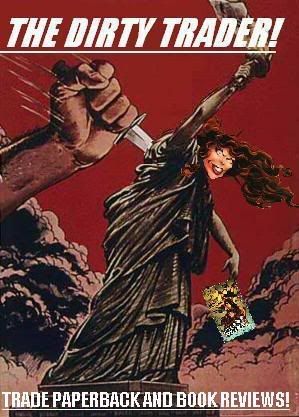
The earliest comic books were collections of comic strips. When a combination of rising licensing costs and decreasing supply of proven strips got in the way of an expanding industry, publishers started generating their own material. Male fantasy melodrama took hold in the comics, but humor strips remained popular on their own and worked as ballast between genre material. Shrinking page counts and the mainstream audience moving to television killed off most of the "funny" in comic books, though the editorial departments at the comic publishers occasionally offer revivals, often super-hero themed. I like funny comics, but most comics traffic in the lowest, most derivative comedy, so I can't name any instances where I've actually enjoyed those publisher strips.
Such was the case with "Mini-Marvels," created by Chris Giarrusso in 1999, and running in many fashions throughout Marvel Comics for about a decade. It was essentially "Marvel Babies," a lighter, kid-friendly, gag-heavy version of the Marvel Universe. Nothing wrong with that, and it was vastly superior to most of Marvel's prior attempts at in-house strips, but I was never bowled over by it. Giarrusso also produced a lot of stuff under Erik Larsen's shingle at Image Comics, including his own super-hero creation, G-Man. The strips mostly ran in issues of The Savage Dragon, and when "Mini-Marvels" wrapped, G-Man became Giarrusso's primary interest. Giarrusso produced a 36 page original story for a one-shot in 2004, then collected it with some of the Savage Dragon strips for the first volume of a trade paperback series. "Learning To Fly" was solicited at a time when I had become very disenchanted with the big two publishers. I liked some of the preview material, and I'd found a gem of a series of similar heritage in Adam Warren's Empowered, but for whatever reason did not pull the trigger on pre-ordering the trade. Over three years later, just ahead of the release of a third trade, I finally hopped on board. It appears I'll be hopping right off.
It's impossible not to notice how cobbled together "Learning To Fly" feels. The lead origin story works well, introducing a comic book random world where a pair of brothers arbitrarily gain super-powers and engage in schoolyard tiffs. It is immediately followed by the first in an entirely unnecessary cycle of strips called "Mean Brother/Idiot Brother." The amateur strip-within-a-strip shows the conflicting perspectives on incidents from the points of view of G-Man, our sympathetic hero, and his older sibling Great Man, who is essentially Reese from Malcolm in the Middle. There are only four of these things total, but they grate mightily. A large portion of the book pulls together short 1-to-3 page strips called "Comic Bits" that sometimes carry a narrative from one to another, but are still set up like a Sunday section building to a last panel punchline. A consequence is their being very episodic and arrhythmic when taken as a whole. An extended parallel universe serial ends the book, but not well, as it just sort of stops with a metatextual bow.
Empowered benefited from starting as a collection of daringly risqué shorts poking fun at the woes of making a living off fetish commissions, which built into an overarching commentary on women in the genre, until the lead character graduated into an entirely new longform story. It was a natural progression for its creator, and felt organic as a result. Warren is also a natural born world builder brimming with gratuitously imaginative contributions to the medium. By contrast, Chris Giarrusso's trade doesn't work as an album, as it cherry picks material from a wide variety of sources produced at different times that mostly travel from bit to bit with no greater objective. It is almost cynical in the way Giarrusso moves his "Mini-Marvels" shtick into the creator-owned arena without having a grasp for how to present his new characters. Despite there being dozens of supporting players, most speak in the same voice as G-Man and serve as his proxy or springboards, rather than having a life of their own. Similarly, most of their designs are basic and derivative, less archetypal than iconic in the manner of stick figures on signs meant to convey a very simple message. Wet floor, deer crossing, handicap only, super-speedster. Without the development time, characterizations and general expectations that come with preexisting characters, Giarrusso lacks a direction to go with his own creations. Hopefully, Giarrusso corrects these problems with later editions, but for now I find myself more interested in seeking out Jacob Chabot's Mighty Skullboy Army collections, as his frequent team-ups with G-Man were the highlight of the strips.



1 comment:
I'm pretty into the continuing series. Just sayin'.
Post a Comment